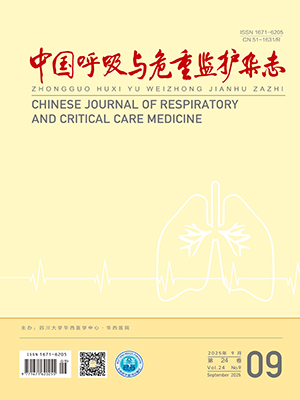| 1. |
Yang Q,Chen Y,Krewski D,et al.Effect of short-term exposure to low levels of gaseous pollutants on chronic obstructive pulmonary disease hospitalizations.Environ Res,2005,99:99-105.
|
| 2. |
潘小川,李国星,高婷.危险的呼吸——PM2.5的健康危害和经济损失评估研究.北京:中国环境科学出版社,2012.
|
| 3. |
中华医学会呼吸病学分会哮喘学组.咳嗽的诊断与治疗指南(2009版).中华结核和呼吸杂志,2009,32:407-413.
|
| 4. |
中华医学会呼吸病学分会慢性阻塞性肺疾病学组.慢性阻塞性肺疾病诊治指南(2013年修订版).中华结核和呼吸杂志,2013,36:255-264.
|
| 5. |
中华医学会呼吸病学分会哮喘学组.支气管哮喘控制的中国专家共识.中华内科杂志,2013,52:440-443.
|
| 6. |
卫生部流行性感冒诊断与治疗指南编撰专家组.流行性感冒诊断与治疗指南(2011年版).中华呼吸和结核杂志,2011,34:725-734.
|
| 7. |
成人支气管扩张症诊治专家共识编写组.成人支气管扩张症诊治专家共识.中华呼吸和结核杂志,2012,35:485-492.
|
| 8. |
中华耳鼻咽喉头颈外科杂志编辑委员会鼻科组,中华医学会耳鼻咽喉头颈外科学分会鼻科学组.慢性鼻、鼻窦炎诊断和治疗指南(2012年,昆明).中华耳鼻喉头颈外科杂志,2013,48:92-94.
|
| 9. |
中华医学会呼吸病学分会睡眠呼吸障碍学组.阻塞性睡眠呼吸暂停低通气综合征诊治指南(2011年修订版).中华呼吸和结核杂志,2012,35:9-12.
|
| 10. |
葛均波,徐永健.内科学(第八版).北京:人民卫生出版社,2013.
|
| 11. |
蔡柏蔷,李龙芸.协和呼吸病学(第二版).北京:中国协和医科大学出版社,2011.
|
| 12. |
环境保护部,国家质量监督检验检疫总局.GB3095-2012环境空气质量标准.北京:中国环境科学出版社,2012.
|




